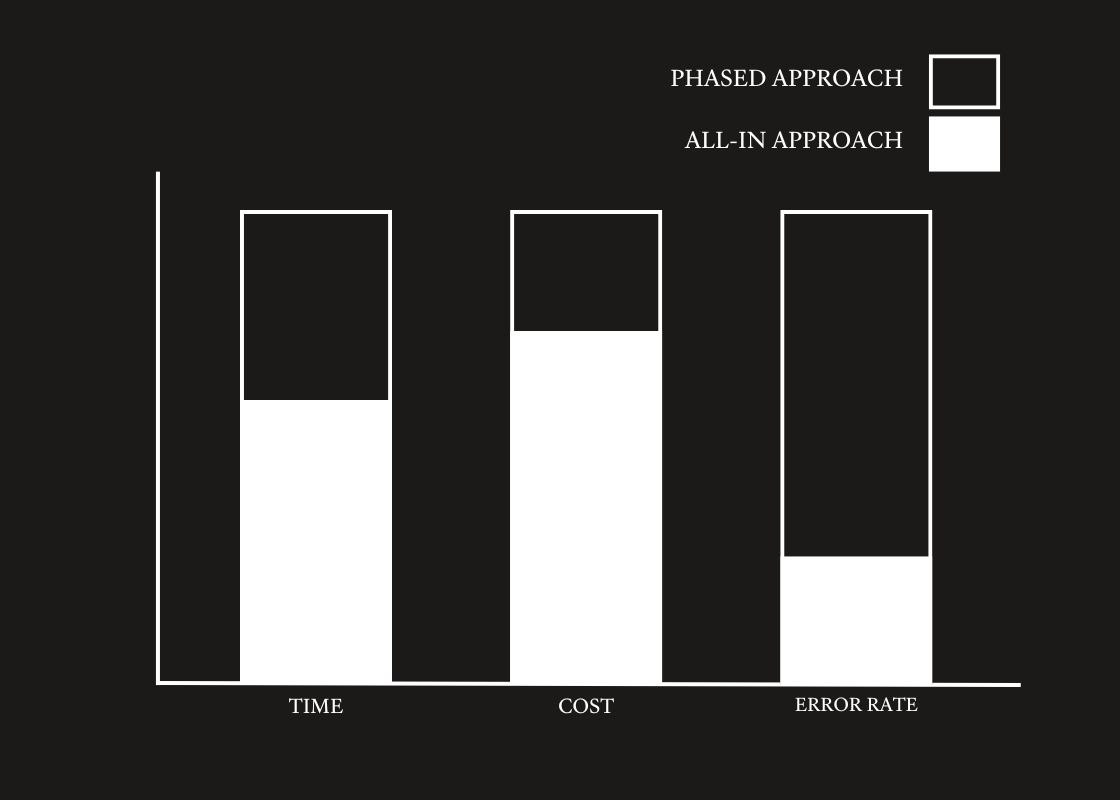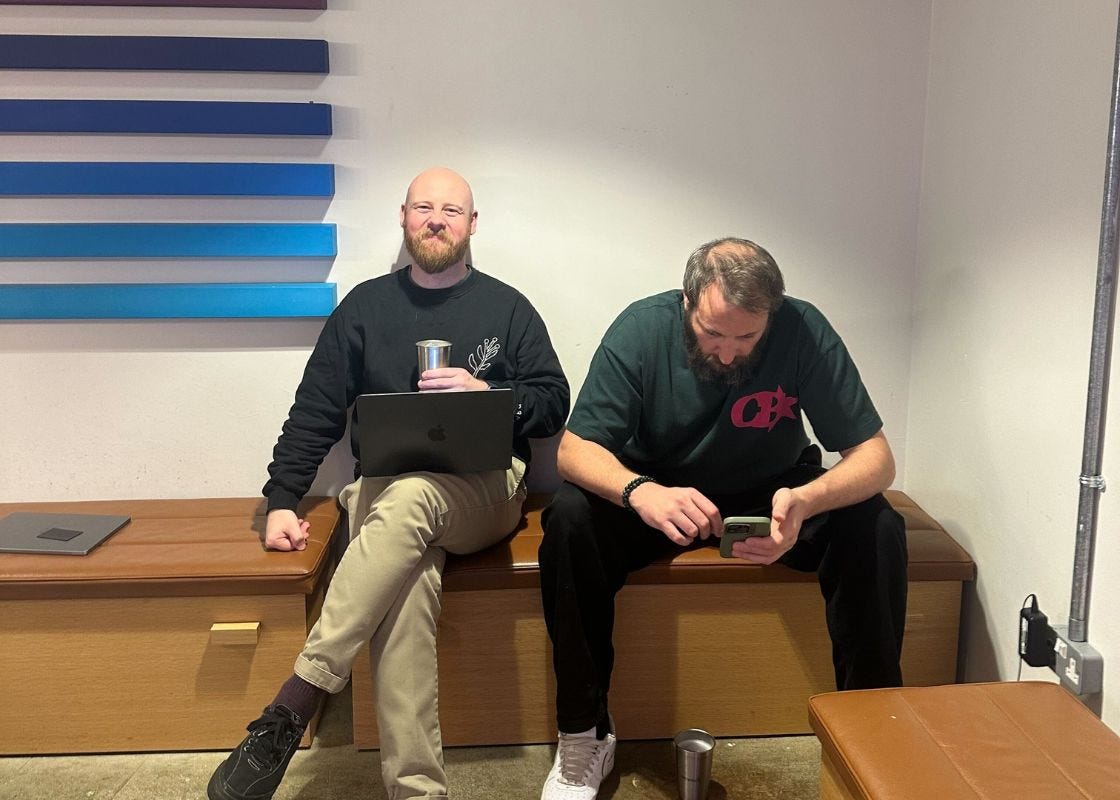Why You Should Go All-In on ERP
And why ERP integrations fail...
When you're about to implement an ERP system, it's easy to fall into the trap of thinking you can phase things out, leave certain teams out of the loop, or kick some processes down the road. After all, ERP systems are big, complex, and time-consuming, so taking shortcuts might seem like the smart move, especially when deadlines are looming and stakeholders are already stretched thin.
But here’s the hard truth: going halfway with ERP implementation is a strategy that leads to long-term chaos. We’ve seen it happen across multiple projects, and the outcomes are always the same—costly delays, inaccurate data, frustrated teams, and a business that’s stuck operating in limbo, with some processes running on the ERP and others still clinging to outdated workarounds.
An ERP system should set your business up for the long haul—5, 10 years down the line—and if you don’t commit fully from the start, you risk not only derailing your implementation but also increasing costs exponentially in the long term. In this article, we'll explain why you need to go all-in on your ERP project from day one, based on what we’ve learned from years of real-world experience helping businesses through this exact process.

Why Some Teams Are Left Out (and Why That’s a Mistake)
We’ve seen it happen: a business decides to implement ERP, but for some reason, certain teams—often finance—are left out of the core project group. Maybe they think the team doesn’t need to be involved because they’re sticking with their own tools, or maybe it’s a time-saving decision.
This seems fine at first, but once the system is live, the problems start. For example: in one retail brand, finance wasn’t engaged during implementation, but when they eventually relied on the ERP for reporting, the data was wrong. Why? They hadn’t been involved in testing, and the system didn’t meet their needs.
This kind of scenario can be avoided if you engage all teams from day one. Even if you don’t think certain departments will need to play a big role right away, if they’re going to use the system in any capacity down the line, they need to be on board from the start.
We’ve seen a similar situation occur with Merch teams not being properly integrated from the start. Parachuting in mid-way or at the end of an ERP implementation sets the solution up to fail because the Merch team should be one of the major beneficiaries of a properly setup ERP but if there specific, nuanced requirements aren’t captured early on then they’re not going to be met. It’s a simple case of you get out what you put in.
Phased Approaches: More Work, Less Success
Another common issue we see is businesses opting for a phased approach. The idea is to go live with only the most critical functions first (phase one), and then handle the rest later (phase two). The reality? Phase two either gets delayed indefinitely or becomes a far bigger headache than anyone anticipated.
By the time phase one is live, stakeholders are often exhausted. They’ve spent 9 to 12 months being pulled away from their day-to-day responsibilities, and they want a break. Once you lose that momentum, it’s tough to regain. What’s more, the complexity increases: you’re running half your business on the ERP and the other half through workarounds. Fixing that mess in phase two takes twice as long, costs more, and leads to more frustration.

The Risks of Poor Planning and Unrealistic Timelines
If you’re not careful, cutting corners early on can come back to haunt you. We’ve seen businesses push for quicker g
o-live dates, hoping to sort things out in phase two, only to find out they can’t. By then, they’re deep in firefighting mode, fixing data inaccuracies and process gaps while transactions continue to flow through the system.
Take one of our clients (who shall remain nameless) as an example. Before working with us the finance department wasn’t fully integrated from the start, and months after go-live, they realised none of their data was right. At that point, it wasn’t a quick fix. With thousands of inaccurate records, the business faced months of delays, complicated by the fact that they were already relying on incomplete data to run their operations. If they had simply given the project the time and scope it needed upfront, they would have avoided months of costly corrections.
Buy-In From the Start: Critical for Success
It’s not just about involving the right teams—it’s about making sure everyone is invested. An ERP system will affect your entire organisation, especially key teams like finance, operations, merchandising, and commerce. So, when you start the process, make sure they’re involved in every step, from discovery through to testing and training.
During our projects, we conduct detailed interviews with every stakeholder to understand how they work, what’s not working, and how ERP can improve their processes. We map out their current workflows and show them what their new process will look like once the ERP is in place. That early engagement makes all the difference—teams are more likely to stay committed if they feel part of the solution from the start.
Training and Documentation: Setting Yourself Up for the Long Term
ERP isn’t just a system—it’s a new way of working. And as people inevitably come and go in the business, proper documentation and training are crucial. This needs to be done well before go-live. As part of our implementation process, we document every step of the new workflow, and we conduct extensive user acceptance testing (UAT). We don’t just train employees on how to use the system—we push them to break it, to make sure it can handle every scenario they’re likely to face.
This also means implementing a ‘train the trainer’ model, where a few key users receive extensive training and then teach the rest of their team. It’s the most efficient way to keep everyone up to speed, especially as your team grows or changes.
Conclusion: Go All-In, or Pay the Price
ERP is a long-term investment. It’s not just about the first few months after go-live—it’s about setting your business up for the next 5 to 10 years. Trying to cut corners, save time, or leave things for phase two is a short-sighted strategy that leads to more work, more costs, and more frustration down the line.
If you want your ERP implementation to succeed, commit from the start. Include every relevant team, plan your scope carefully, and give your project the time it needs. You’ll thank yourself later.
Ready to Go All-In on Your ERP?
Whether you're just starting your ERP journey or you've been through a bumpy implementation that didn’t quite go as planned, we’re here to help. We’ve seen it all—businesses that are unsure where to begin and those stuck in the aftermath of a "failed" phase one, struggling to get phase two off the ground.
At Commerce Thinking, we specialise in making ERP work for your business, whether that means guiding you through the discovery process, helping you define the right scope, or stepping in to fix the problems holding your system back.
If you're ready to get your ERP journey back on track or make sure you're set up for long-term success from the start, reach out to us today. We’ll help you go all-in and get it right the first time.



